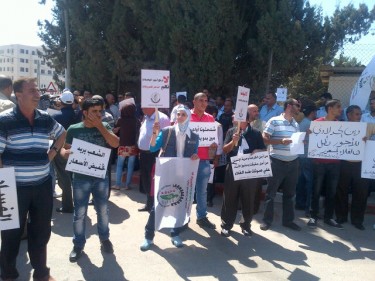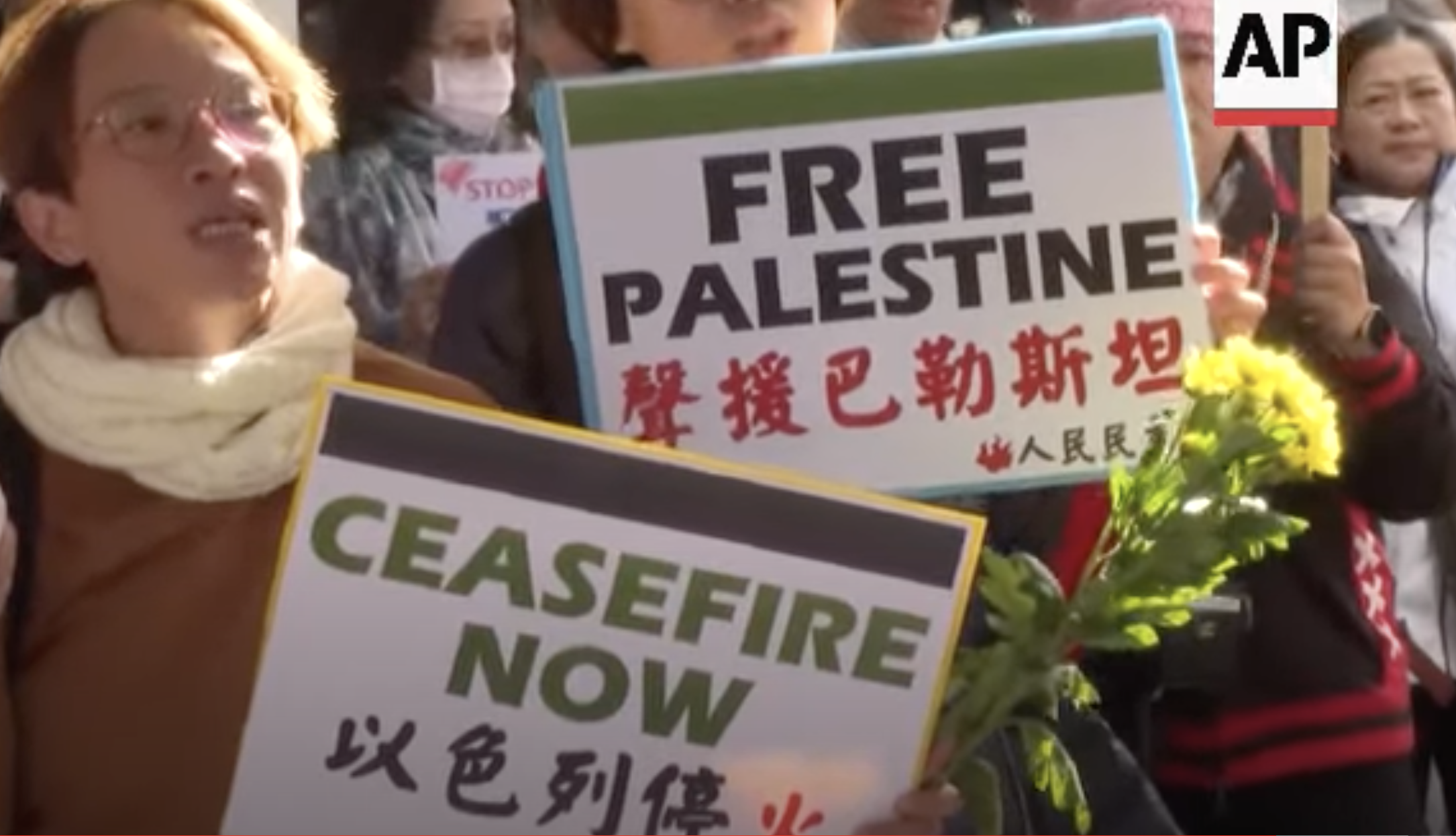Protests against high prices and unemployment that started almost a week ago are continuing in major cities in the West Bank. On September 10, 2012 there was a call for strikes in public transportation and schools.
International and Palestinian activists have been participating in and writing about the demonstrations on Twitter and other social media platforms.
Activist Scott Campbell summarized the events taking place in a number of Palestinian cities:
@angrywhitekid: No public transport in Ramallah, Hebron, Nablus, Tulkarem… Tires burning in Nablus, Hebron & on road btwn Ramallah & Qalandia

Striking public sector employees gather in front of Prime Minister Fayyad's offices. Image by Twitter user @sheikhNB.
Blogger Ola Al-Tamimi, a resident of Hebron, was participating in and tweeting from the demonstrations. She saw how a peaceful demonstration started with chants against Prime Minister Salam Fayyad, then changed [ar]:
Ola was asked what was really behind these protests, and who was responsible for attacking the municipality building with stones later. She replied [ar]:
These acts of vandalism resulted in clashes between the police and the protesters, as journalist Noah Browning witnessed:
@sheikhNB: In Hebron, police in riot gear are firing tear gas at protestors, trading volleys of stones w them, surging back and forth.
In Nablus the scene was similar, starting with peaceful demonstrations then ending with a riot. Yamama Shakaa tweeted [ar]:
Muhammad Masharqa, a blogger from Hebron, expressed his opposition to the use of violence in peaceful demonstrations. He wrote [ar]:
On September 11, hundreds of Palestinians responded to a call (starting on Facebook) to protest in Ramallah for dignity and freedom and against the Paris Protocol, the economic annex of the Oslo Accords.
Surprisingly, the demonstration was able to reach Al Muqata'a, the presidential headquarters, and protestors chanted against the Oslo agreement, the Palestinian Authority and President Mahmoud Abbas without any interference from or clashes with the security force members standing nearby. Linah Al Saafin had an explanation:
@LinahAlsaafin: By letting protesters reach Muqata'a today, PA showed its “democratic” face to confuse people into not protesting against them.
These demonstrations came right after the Prime Minister Salam Fayyad announced that VAT would be reduced to 15% and diesel, gas and kerosene would revert to August prices – an announcement which did not satisfy protesters.
These protests were directly targeting the economic annex to the Oslo Accords, known as the Paris Protocol. The protocol was signed in 1994 between the Palestinian Liberation Organization and Israel and controls their economic relationship, including trade, agricultural products, and imports and exports. Palestinians are currently asking for the revision and modification of this protocol, if not cancelling it altogether. Blogger Raya Ziada has explained in a blog post [ar] why the Palestinians should get rid of the Paris Protocol.
Abir Kopty believes the current events are just a beginning and that Palestinians will move on to target wider political issues, especially the Israeli occupation. She tweeted:
@AbirKopty: I'm really hoping that after this wave of protests, we #EndOslo & move forward towards Israel.
For more reactions on Twitter, follow the hash tag: #PalProtests. For photos see the set entitled Palestinian Social Struggles by Flickr user Activestills.







1 comment